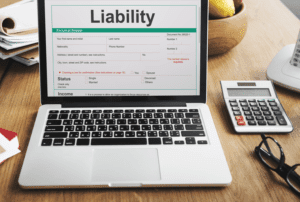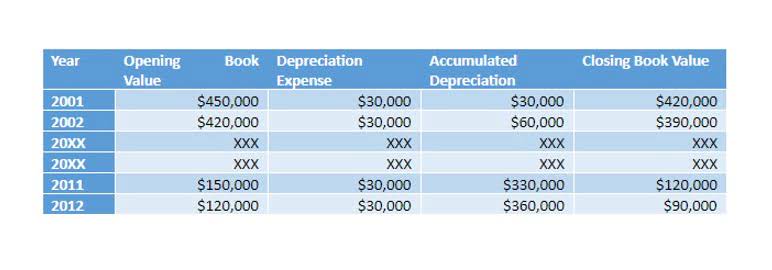Adjusting entry for unearned revenue: examples and how to

“Deferred” means “postponed into the future.” In this case a customer has paid you in advance for a service you will perform in the future. (Think of a gift card you issue to a customer.) When you receive the cash, you debit the Cash account. However, you cannot credit your revenue, or Fees Earned, account at that point because you have not yet earned the money. Instead you credit Unearned Fees, which is a liability account, to recognize that you owe the customer a certain dollar amount of service. Unearned revenue is a type of liability that is recorded on the balance sheet of a business.

Recording unearned revenue is important because your company can’t account for it until you’ve provided your products or services to a paying customer. It’s important to rely on accounting software like QuickBooks Online to keep track of your unearned revenue so that you can generate accurate and timely financial statements each accounting period. The basic building blocks for accurate income statements and balance sheets are accurate journal entries.
Unearned revenue vs. deferred revenue
Both transactions above for deferred revenue are essentially the same, so the discussion will cover only the first one. The difference is that a landlord who deals in rent may prefer to name the accounts to better suit the rental income business. It also means that the equipment and planning that went into the transaction must be discarded, and with unearned revenue, the chances of this are higher than earned revenue. The current ratio is another one that can be negatively affected as the current liabilities increase while the current assets don’t. It will make the organization look less liquid than they are due to the increase in unearned revenue. When they pay the rest and complete the transaction, they need to adjust the accounts.
- “Deferred” means “postponed into the future.” In this case a customer has paid you in advance for a service you will perform in the future.
- This may involve the generation of a journal entry in order to accurately reflect the revenue recognition in the company’s financial statements.
- You accepted cash in advance of doing a job during the month and initially recorded it as a liability.
- At the end every accounting period, unearned revenues must be checked and adjusted if necessary.
- There are two alternative approaches to record the journal entry of this type of transaction and the subsequent adjustment entries to recognize the revenue when becomes earn.
During the month the company may earn some, but not all, of the cash that was prepaid if it performs some of the work for the customer but does not yet complete the job entirely. The company will wait until the end of the month to account for what it has earned. In addition, on the income statement it will show that it did not earn ANY of the prepaid amount when in fact the company earned $600 of it. This journal entry reflects the fact that the business has fulfilled its obligation to the customer, and the revenue can now be recognized as earned. It also reduces the unearned revenue liability by the same amount, as the business no longer has an outstanding obligation related to this revenue.
QuickBooks Online and balance sheets
Unearned revenue, sometimes referred to as deferred revenue, represents advance payments a company receives for goods or services that have not yet been provided. Using accrual accounting, or double-entry accounting, you’ll need to record unearned revenue as a liability. Once the goods or services are rendered, and the customer has received what they paid for, the business will need to revise the previous journal entry with another double-entry. This time, the company will debit the unearned revenue account and credit the service revenues account for the corresponding amount. Using our example, when the landscaping company receives its $200, it will debit its cash account in the amount of $200 and credit its unearned revenue account in the amount of $200.
Form 10-Q LINCOLN EDUCATIONAL SERV For: Sep 30 – StreetInsider.com
Form 10-Q LINCOLN EDUCATIONAL SERV For: Sep 30.
Posted: Mon, 06 Nov 2023 20:10:29 GMT [source]
They must then raise that money under the pressure of customers wanting their money as soon as possible. If a transaction doesn’t go through, the organization may have to use the money it needs to raise more funds. If they find themselves in a situation where they have used the money, and the customer wants a refund, they have to raise more. This liability also increases the debt-to-equity ratio and may make it harder for the organization to gain more debt due to the debt they already have. This could also lead to them losing potential investors and suppliers. Get instant access to video lessons taught by experienced investment bankers.
Journal entry for cash received for services not yet performed
The earned revenue is recognized with an adjusting journal entry called an accrual. It’s categorized as a current liability on a business’s balance sheet, a common financial statement in accounting. To help ensure accurate and timely revenue recognition, companies should establish policies and procedures that are in line with SEC criteria. Companies should also communicate with their customers to ensure that the criteria are met and to document any agreements for the delivery of goods or services. This will help to ensure that unearned revenue is accurately reported and any deferral of revenue is recorded.

Payments received in advance of services or goods being provided can be classified as a liability on the balance sheet. Unearned revenue is recognized as a liability on the balance sheet since the company has an obligation to provide the goods unearned revenue or services to the customer at a later date. It is important to differentiate between unearned revenue and accounts receivable. Accounts receivable is income received from the sale of goods or services that have already been provided.
Once the delivery has been completed, and your business has finally provided the prepaid goods or services, the unearned revenue is converted into revenue on the balance sheet. Unearned revenue, sometimes referred to as deferred revenue, is payment received by a company from a customer for products or services that will be delivered at some point in the future. The term is used in accrual accounting, in which revenue is recognized only when the payment has been received by a company AND the products or services have not yet been delivered to the customer. If a publishing company accepts $1,200 for a one-year subscription, the amount is recorded as an increase in cash and an increase in unearned revenue. Both are balance sheet accounts, so the transaction does not immediately affect the income statement. If it is a monthly publication, as each periodical is delivered, the liability or unearned revenue is reduced by $100 ($1,200 divided by 12 months) while revenue is increased by the same amount.
Unearned revenue is recognized as a current liability on the balance sheet. As the obligation related to the unearned revenue is delivered over time, the liability decreases as the amount is transferred to revenue on the income statement. When a customer prepays https://www.bookstime.com/ for a service, your business will need to adjust the unearned revenue balance sheet and journal entries. Your business will need to credit one account and debit another account with corresponding amounts, using the double-entry accounting method to do so.

Leave a Reply